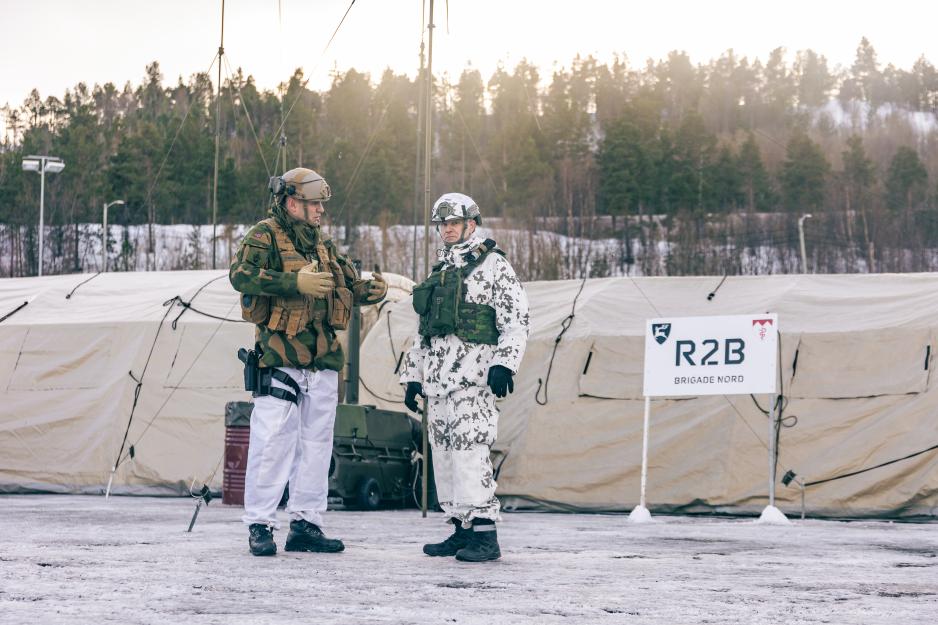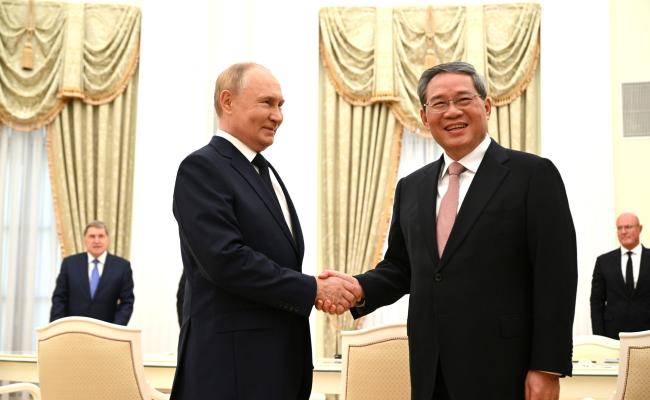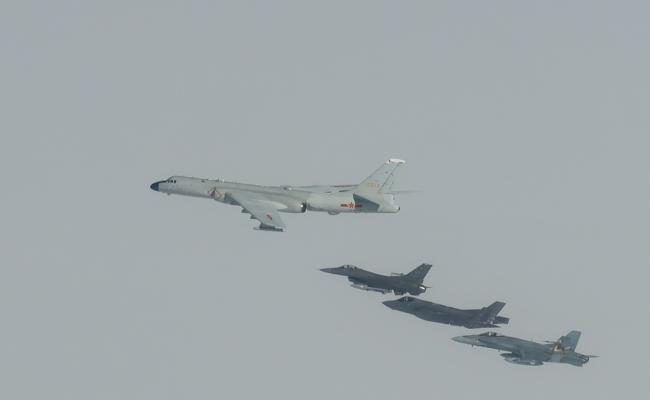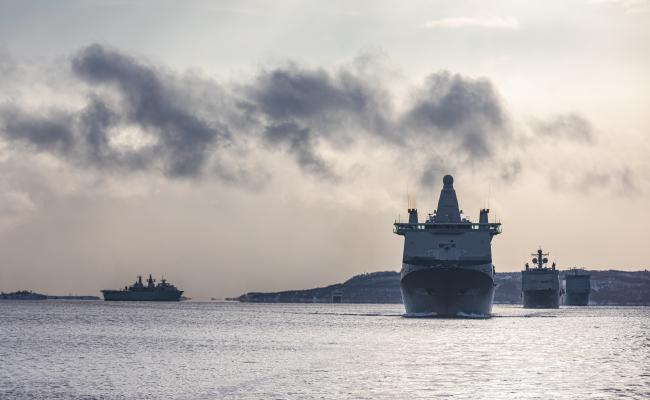The Arctic Review 2024: Closing the Gap Between Europe and North America: The Defense Year 2024

The Arctic Review 2024 identifies the Nordic Response 2024 exercise as one of the most prominent events in Arctic defense last year. Here are Major General Lars Lervik and Lt. General Pasi Vällimäki during the exercise. (Photo: Tor-Magnus Øverås/the Norwegian Armed Forces)
In a review of the Arctic 2024, researchers shed light on the most substantial developments in the Arctic in the year that passed. The past 12 months have reconfirmed the importance of the Arctic as a site of deep military significance, says researcher Thomas Hughes, highlighting how Europe and North America have attempted to close the North Atlantic gap in the changed geopolitical situation.
"Sweden’s accession to NATO, even if it was expected, represented a shift in the balance of capability in Europe’s High North, and strong emphasis has been put on the connection between North America and Europe in Arctic defense," writes Thomas Hughes at the Mount Allison University in the recently published Review of the Arctic 2024.
The review is published by the Observatory on Politics and Security in the Arctic (OPSA) at the Ècole National D'Administration Publique in Quebec, Canada.
It focuses on the most significant developments in the Arctic in the year that passed, which includes natural resources, connectivity, navigation, human security, diplomacy, tourism, and defense for the 2024 edition.

Thomas Hughes, Assistant Professor at the Mount Allison University. (Photo: Mount Allison University)
Hughes, who has authored the section on defense, says, "Overall, in both policy creation and in action, the activities of Russia, China, Ukraine, and NATO’s Arctic members in 2024 have reconfirmed the importance of the Arctic as a site of deep military significance."
In all, the 2024 defense developments demonstrate how the Arctic region is of considerable defense concern.
Arctic strategies and defense spending
The new Canadian defense policy, Our North, Strong, and Free, and the US Department of Defence Arctic Strategy, illustrates the increased importance of the Arctic in thinking about the North American defense, writes Hughes.
Linking North America and Europe seemed to be the trend in the past year. From US troops parachuting onto a lake in Northern Norway to US access to new agreed areas in Norway, the North Atlantic gap was attempted to be closed.
In March, during the Nordic Response exercise, a NATO air command for the Nordic region was tested for the first time, another example of Trans-Atlantic connections.
The region's increased geopolitical significance has also led Arctic countries to amp up their defense spending in the past year.
The Canadian defense policy included “additional funding of $8.1 billion over the next five years and $73 billion over the next 20 years,” and the Swedish Total Defence Resolution highlights the threat Russia poses and commits to increasing defense spending by SEK 13 billion over the next six years, with a focus on the country's North.
In October, the Norwegian Government proposed a NOK 19 billion increase in defense spending.
Nordic Response
The NATO exercise Nordic Response became a symbol of the increased significance of the Arctic region as over 20,000 soldiers from 13 countries exercised in the northern parts of Norway, Finland, and Sweden – i.e., the Cap of the North.
Hughes writes that although one should not see exercises as an indication of expected future conflict, the extent of this training shows NATO's concern about potential conflict in the Arctic and the need to be prepared.
Chinese-Russian cooperation
Another worthy mention from the defense year 2024 is the strengthened Chinese-Russian collaboration, most notably the two countries' joint air patrol off Alaska in July.
Hughes says the implication is clear, "China is overtly aligning itself with Russia in framing the Arctic as a feasible avenue for attack against North America."
He also points out how Chinese military vessels have operated around the Aleutian Islands. And in October, HNN reported that Chinese Coast Guard and Russian Border Service vessels have conducted a joint patrol in the Arctic Ocean for the first time.
However, the two navies have not agreed to a program of "formal joint Arctic voyages of exercises in the Euro-Arctic waters," and some Norwegian researchers believe that "The Arctic is not a priority for China, while Russia fears Chinese influence in this strategically important region," making much of the Chinese-Russian cooperation symbolic politics.
'Race' for critical minerals
The review also highlights the geopolitical aspect of the Arctic's natural resources and particularly critical minerals in its look back on 2024.
Mathieu Landriault, an adjunct professor at the Ècole NAtional D'Administration Publique, has contributed to the review with a piece on the Arctic's natural resources.
"Long lead times and structural constraints (labor shortages, difficult weather, etc.) for the mining industry in much of the Arctic region make it difficult to develop these resources," he writes about the critical minerals found in the Arctic region.
He says that the growth in this area is modest and that many projects span decades rather than years. While many projects are far from the production phase, such as Baffinland's Mary River mine in Canada or the Malmberg and Bluejay projects in Greenland, 2024 has moved projects forward within the different national regulatory frameworks.
The activities have reconfirmed the importance of the Arctic as a site of deep military significance.
He also highlights Norway's plans to explore the seabed on its continental shelf for deep-sea minerals. The awarding of licenses was pushed to 2026, and the author highlights that this was a postponement and not a cancellation of the plans for deep-sea mining.
Although the year 2024 saw a focus on the ' frantic race' for critical minerals, the author concludes that the slow development of projects casts doubt on this perception:
"Rather than conceptualizing it as a 100-metre race, it would be more accurate to think of it as a 3000-metre steeplechase: a long-distance race, with numerous obstacles, which will trip up many."
Other areas of development
While the topics of defense and critical minerals have been copious in the public eye, the report also focuses on significant developments in connectivity, navigation, human security, diplomacy, and tourism.
- Navigation: Commercial shipping in the Arctic is increasing, particularly through Canadian and Russian waters. Climate change and geopolitical tensions continue to pose risks to this trend.
- Human security: Threats to human security in the Arctic have worsened in five out of seven dimensions: community security, economic security, environmental security, political security, and health security. Improvements have been seen in the food security and personal security dimensions, much due to indigenous initiatives.
- Tourism: Arctic tourism continues to grow and diversify. This creates economic opportunities but also increases environmental and social pressures on local communities.
- Diplomacy: Diplomatic tensions between Western countries and Russia have intensified and Arctic cooperation frameworks are being restructured. Donald Trump's re-election adds further uncertainty to Arctic diplomacy.
- Connectivity: Arctic connectivity is expanding rapidly but remains fragile and unevenly distributed. Low Earth Orbit constellations are transforming Arctic connectivity (Starlink and OneWeb, for example). Submarine cables need more protection, given their increased position as strategic assets.





